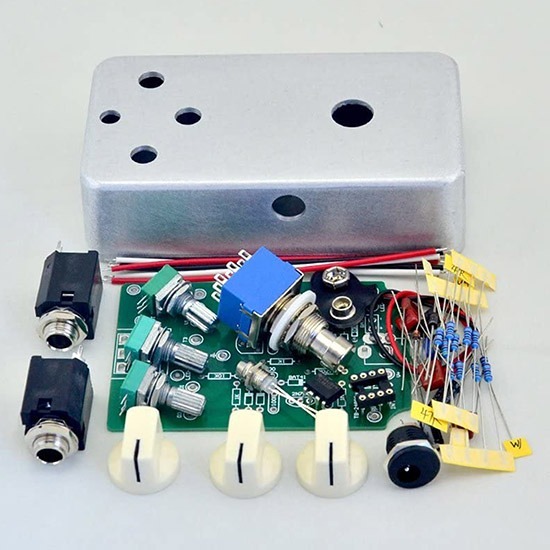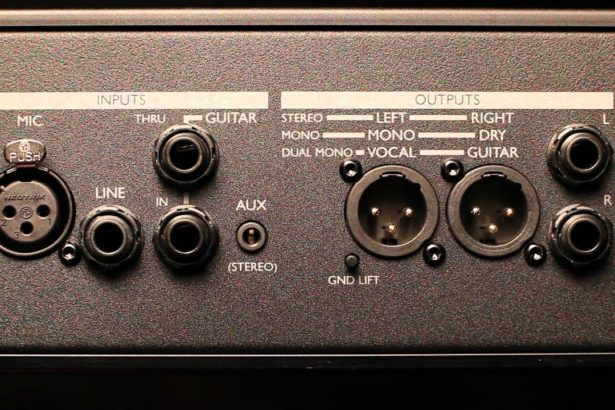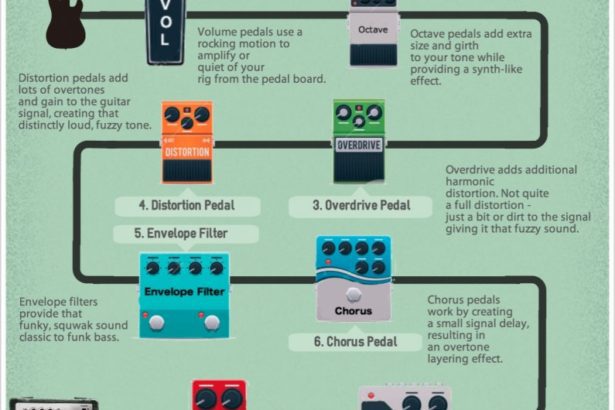Why You Shouldn’t Buy Guitar Pedal Kits

The allure of DIY guitar pedal kits is undeniable. They promise a unique tone, a learning experience, and the satisfaction of creating your own effects. However, lurking beneath the surface of many kits sold on popular online marketplaces are hidden risks and quality issues that can turn your dream project into a nightmare. And overall : poor sound!
Low Quality Components: The Heart of the Problem
At the core of any electronic circuit are its components, and in guitar pedals, their quality is paramount. Many kits from these sources use resistors with high dispersion, meaning their actual values can vary significantly from what’s stated. This inconsistency can dramatically alter the intended sound profile of your pedal. For instance, a 5% tolerance resistor in a critical part of the circuit could push your carefully tuned overdrive into harsh distortion territory.
Capacitors, another crucial element, often fall victim to cost-cutting measures. Low-quality capacitors can introduce a host of issues including leakage, instability, and even microphonics (where the capacitor physically vibrates, introducing unwanted noise). The result? A pedal with an unstable frequency response and increased noise levels, far from the pristine tone you were aiming for. A high quality capacitor from a well-established brand can cost a dozen times more than a low cost one.
Scratchy Potentiometers: More Than Just an Annoyance
Potentiometers, or “pots,” are the interactive heart of most pedals, controlling everything from volume to tone shaping. Cheap pots made with poor materials or contaminated with debris during manufacturing can result in the dreaded “scratch” when turned. This isn’t just annoying – it can introduce unwanted noise into your signal chain and make fine adjustments nearly impossible. Moreover, these subpar components often have a much shorter lifespan, meaning your pedal’s usability will degrade over time.
Subpar Transistors and ICs: The Brains of the Pedal
Transistors and integrated circuits (ICs) are often considered the “brains” of a pedal, responsible for key functions like amplification and signal processing. The risk of counterfeit or mislabeled components is surprisingly high in cheap kits. These inferior parts can drastically alter the gain structure, increase noise levels, and change the overall character of your pedal. This is particularly problematic for classic circuits that rely on the specific behavior of certain transistors – your attempt at a vintage-style fuzz could end up sounding nothing like the pedal that inspired it.
Inferior Connectors: The Weak Link
Even if all the internal components were perfect, poor-quality connectors can ruin the entire pedal. Cheap kits often cut corners on jacks, switches, and solder joints. These connection points are critical – they’re how your guitar’s signal enters and exits the pedal. Bad connections introduce noise, cause intermittent operation, and can even lead to signal loss. Over time, these issues tend to worsen, turning what should be a reliable tool into a frustrating liability on your pedalboard.
Overall Impact on Sound Quality
The cumulative effect of multiple low-quality components is far greater than the sum of its parts. A pedal built with subpar elements is likely to have a higher noise floor, altered frequency response, and potentially unwanted distortion. Even worse, the inconsistency between components means that two people building the same kit could end up with wildly different-sounding pedals. This unpredictability defeats one of the main purposes of buying a kit in the first place – to achieve a specific, desired sound.
Hidden Costs of Cheap Kits
While the initial price tag of these kits may be tempting, the hidden costs quickly add up. Hours spent troubleshooting, replacing components, and dealing with unreliable performance can quickly outweigh any initial savings. There’s also the potential risk to the rest of your gear – a malfunctioning pedal could potentially damage an expensive amplifier. Perhaps the biggest cost, however, is the disappointment and frustration for beginner builders, who might be turned off from the rewarding world of DIY audio before they’ve had a chance to truly experience it.
In conclusion, while the idea of saving money on a pedal kit from a major online marketplace is tempting, the reality often falls far short of expectations. The risks of low-quality components, poor performance, and long-term reliability issues make these kits a false economy. Instead, consider investing in kits from reputable manufacturers or, if you’re more experienced, sourcing quality components individually. The extra cost upfront will pay dividends in terms of sound quality, reliability, and the overall satisfaction of creating a pedal that truly sings.


